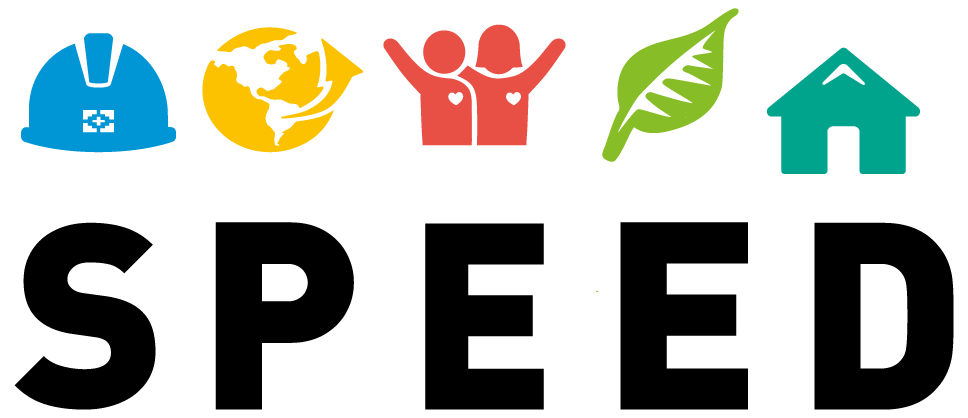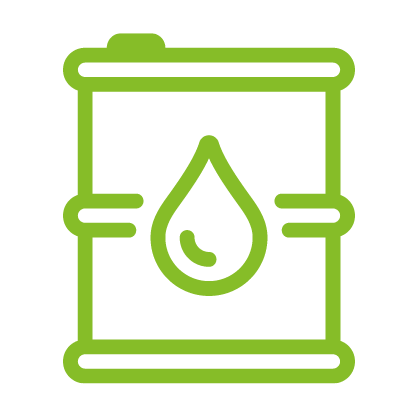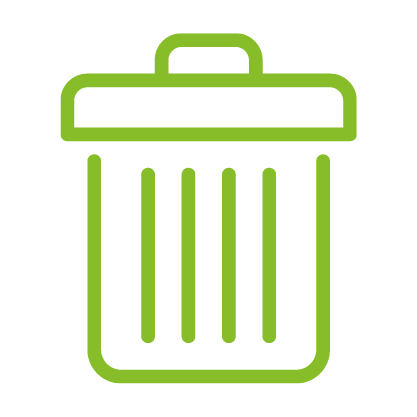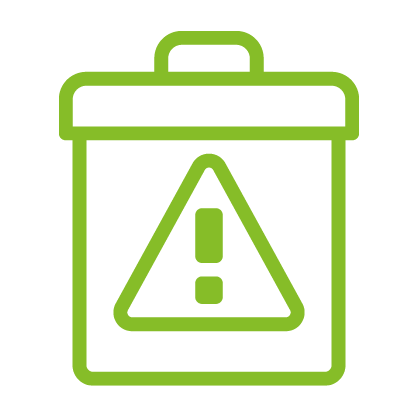(103-1) GeoPark focuses its responsible resource use on appropriate water management, especially in operational efficiencies, reducing our environmental impact, and avoiding water-related conflicts and ensuring the water security in our neighboring areas.
(103-2) Our responsible use of natural resources in operations is through efficient water consumption, comprehensive waste management and proper disposal of residual effluents.
We know that water is a strategic and essential resource for sustainable development in the territories we operate in, and so for us it is one of the most important elements to control. We implement different water saving and efficient water consumption initiatives, we do not directly discharge into surface water courses, and we reuse wastewater.
Our Comprehensive Water Management Program gives us up-to-date information to control consumption in our operations, ensure compliance with our permits and take the necessary actions in the different activities that need water.
Rules in Colombia mean that companies such as GeoPark must invest at least 1% of the total cost of projects in the preservation of water resources. In Argentina and Chile, GeoPark fulfils all legal obligations regarding water use.
All wastewater generated from our operations is treated and disposed of in accordance with our environmental license.
We focus our solid waste management on reduction, reuse, recycling and recovery, and in full compliance with regulations we minimize, mitigate and compensate any potential environmental impact.
(103-3) As water is one of the world’s most important natural assets, we work to protect and preserve it. GeoPark is committed to innovation and implementing best practices in efficient water consumption and reuse, and discharges management.
Interaction with water as a shared resource
(103-1) The water we use in our operations comes mainly from underground sources, surface water bodies, lateral borrow areas, authorized third parties and water that we produced from the oil separation processes in batteries and water treatment plants, which is reinjected into wells for secondary oil recovery.
The volume of water by source withdrawn for our operations is shown below.
(303-3) (303-5) SASB: EM-EP-140a.1. IPIECA: ENV-1 Water withdrawal and consumption by source in each asset
Water consumption in Argentina and Chile decreased by 16% and 3% respectively in relation to 2019.
In Colombia there was water withdrawal from a surface source in 2020, equivalent to 3% of the total water withdrawn, due to the incorporation of the Platanillo field.
At GeoPark we control water consumption in each of our operations to ensure compliance with the maximum flows allowed by our environmental permits and to take appropriate measures for the different activities that need water.
We permanently measure water withdrawal and verify that volumes are below the maximum authorized levels.
Water reuse is a priority for us in our daily operations. In 2020 we implemented measures to treat drilling waste effluents through a reverse osmosis process that allows us to reuse water in the preparation of drilling muds.
Reverse osmosis was implemented in the drilling of 17 wells, allowing us to reuse 4% of the total fresh water withdrawn in the Colombian operations.
SASB: EM-EP-140a.4 GeoPark water reuse (m3)
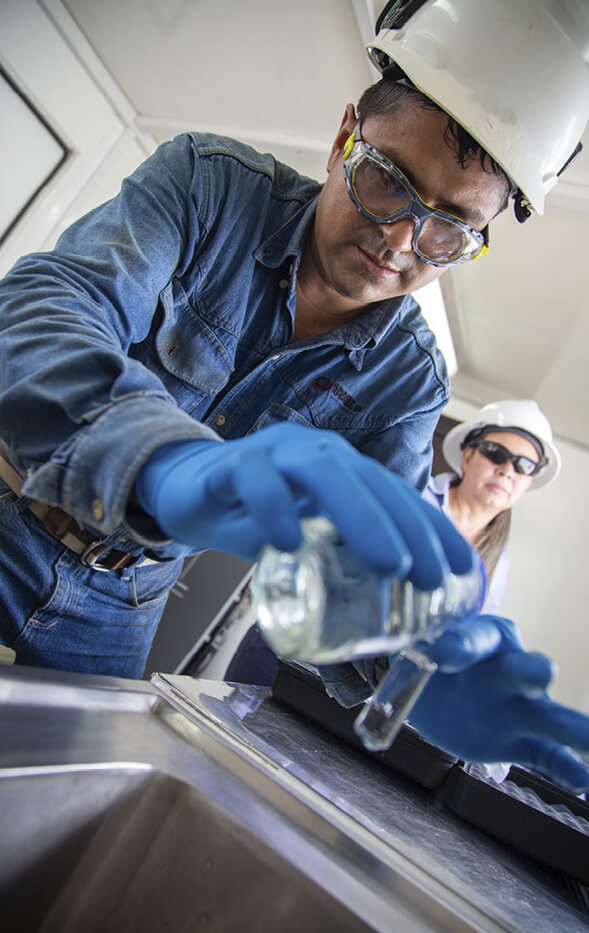
(303-2) Strategies for efficient water consumption as well as initiatives to avoid direct discharges and wastewater reuse show proper environmental management and lower demand for water compared to other economic sectors.
At GeoPark we develop wastewater treatment processes according to the legal standards in each country we operate in. We monitor the water prior to final disposal at the frequencies established in our environmental licenses or any other local provisions.
(303-4)* SASB: EM-EP-140a.2. IPIECA: ENV-2 Water Discharge
*Blocks in Ecuador do not have operations.
In Colombia our blue water footprint for 2020 was 9.75 (l water withdrawn/boe produced), mainly due to the use of fresh water for camps, administrative headquarters, drilling, dust dampening on roads, civil works and other industrial uses.

(306-2) As part of our Environmental Management System, we have developed a solid waste monitoring system for all our operations, enabling us to monitor waste generation reduction measures.
We implemented a Comprehensive Waste Management Plan to ensure compliance with environmental legislation in the handling and final disposal of each type of waste generated. We also work with specialized waste recyclers.
In Colombia, along with our contractors, we carry out audits on all types of waste disposal and the proper way to file reports, which are used to inform the environmental authorities of the actions we have taken.
IPIECA ENV-7 (306-3) Waste generated
*The volume of hazardous waste reported corresponds to drilling muds and includes what was treated internally by dehydration and what was handled by third parties for final disposal.
** Drilling mud data that was not previously reported in 2018 and 2019 is included.
*** The decrease in hazardous waste by weight and volume from 2019 is mainly due to lower operations because of the pandemic.
In 2020 there was a 60% reduction in the generation of hazardous waste reported by weight and a 34% reduction by volume from 2019, mainly due to the decrease in activities during the pandemic.
Of the total non-hazardous waste generated in 2020 (1,157.8 tonnes), 48% was organic, 27% was recyclable and 25% was non-recyclable solids sent to final disposal in sanitary landfills authorized by environmental authorities.
Of the total hazardous waste reported by weight (399.8 tonnes), 99% were solids and most were contaminated with hydrocarbons. 67% was incinerated and 33% was sent to sanitary landfill facilities authorized by environmental authorities. The remaining 1% was post-consumer waste.
Regarding the waste reported by volume (23,559.7 m³), most was drilling cuts and contaminated soils, 46% was internally treated by dehydration and 54% was handled by authorized third parties.
In Colombia the increase in the amount of non-hazardous waste in 2020 is mainly due to the disposal of ferrous material that was disposed of by a licensed third party that held the required environmental permits.
In Chile and Argentina, we measure waste generated in weight and volume controls at the final disposal sites, which are managed by third parties licensed by authorities. We tracked the final disposal of hazardous waste through the Chilean government’s SIDREP contaminants emissions and transfer platform.
In Argentina, hazardous waste from hydrocarbon-contaminated soil was treated by bioremediation and physical, chemical and biological controls.
Waste generated in Brazil came from the extensive production testing activities in the Praia dos Castelhanos well in Block REC-T-128 between January and May 2020.
For more details of our waste indicators, see the Environment Appendix.

